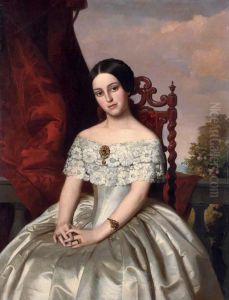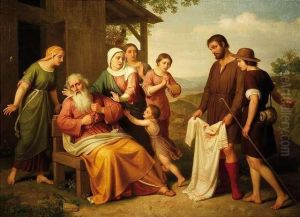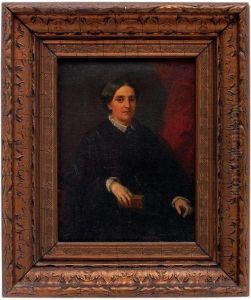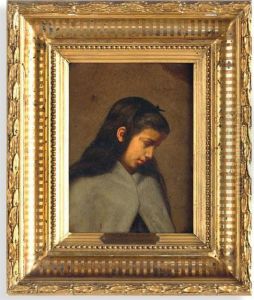Pelegrin Clave Y Roque Paintings
Pelegrín Clavé y Roque was a notable Spanish painter known for his contributions to the Mexican art scene in the 19th century. Born on April 28, 1811, in the small town of Reus, in Catalonia, Spain, Clavé developed an interest in the arts at an early age. He initially studied at the School of Fine Arts in Barcelona before moving to Rome, which at the time was a mecca for artists seeking to refine their skills and absorb the classical and Renaissance art influences.
In 1846, Clavé emigrated to Mexico, a country that was undergoing significant cultural and political transformations. He was invited by the Mexican government to direct the Academy of San Carlos, which had been founded in 1781 and was the first major art academy in the Americas. His tenure at the Academy proved influential in shaping the direction of Mexican art during that period. Clavé introduced new techniques and European artistic standards to his students, emphasizing Neoclassicism and Romanticism, styles that dominated European art at the time.
Clavé's work as an educator was significant, as he trained a generation of artists who would go on to become central figures in Mexican art, including José Salomé Pina, Santiago Rebull, and Felipe Santiago Gutiérrez. His influence helped to establish a more rigorous and academic approach to art in Mexico and contributed to the development of a national identity in Mexican art.
As an artist, Clavé was known for his portraits, religious paintings, and historical works. His style often reflected his classical training with a strong emphasis on realism and attention to detail. Some of his notable works include 'La Carlota', a portrait of the Empress Carlota of Mexico, and 'The Martyrdom of Saint Sebastian'. His art was well-received in Mexico, and he participated in various exhibitions, earning accolades for his contributions to Mexican culture.
Pelegrín Clavé y Roque passed away on July 1, 1880, in Mexico City. He left behind a legacy as a key figure in the 19th-century art history of Mexico, a bridge between European artistic traditions and the burgeoning Mexican art scene. Today, many of his works are housed in the National Museum of San Carlos in Mexico City, preserving his impact on the arts for future generations.



